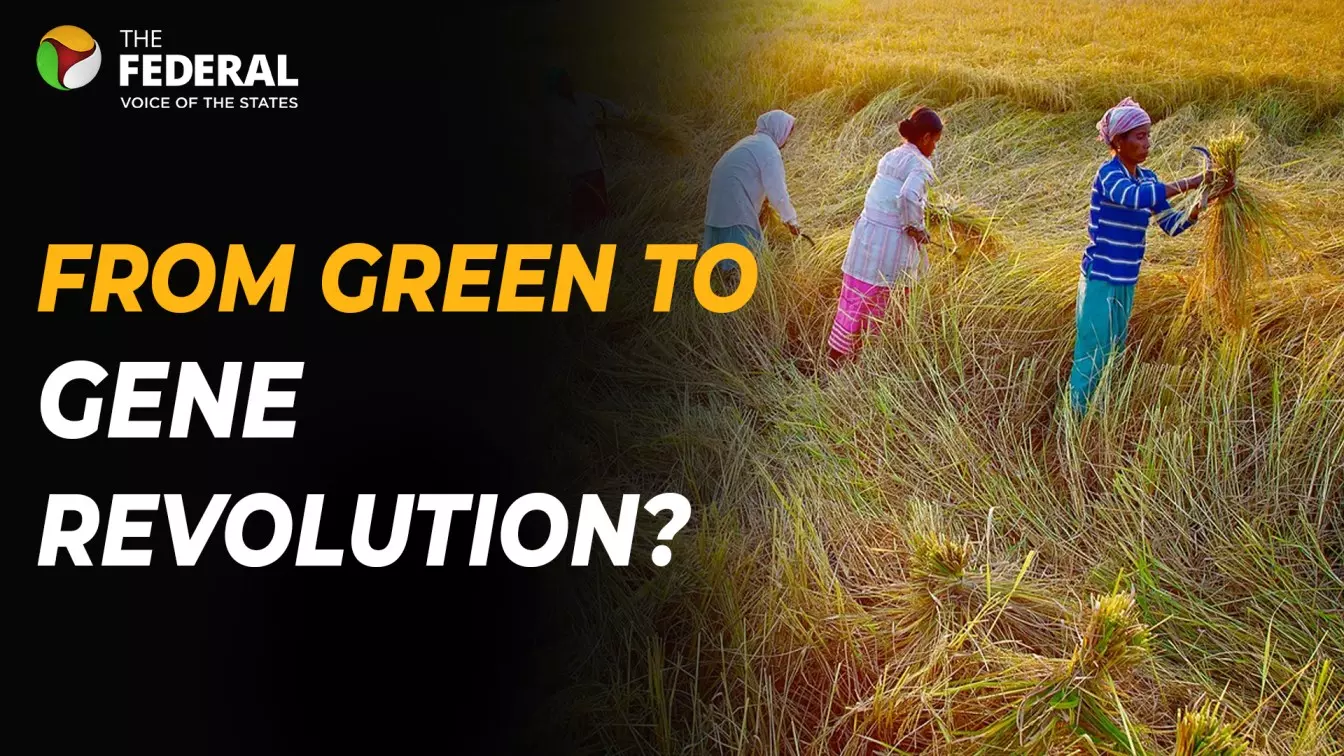
Is genome editing the key to sustainable crop cultivation? | Interview
ICAR’s genome-edited rice promises higher yield with lower impact. Will farmers reap the benefits?

In this interview, Vivian Fernandes speaks with Dr. Mangi Lal Jat, Director-General of the Indian Council of Agricultural Research (ICAR), on India’s path toward sustainable agriculture. The conversation explores genome-edited rice, diversification of cropping systems, and lessons from global collaborations as ICAR charts new frontiers in agricultural innovation.
When will ICAR’s genome-edited rice varieties reach farmers?
We need newer technologies to tackle climate change, salinity, and water challenges. India may be the world’s largest rice producer, but we face mounting threats. These genome-edited rice varieties are world-firsts, designed with specific traits: 25 days shorter duration, higher yields, reduced water use, lower methane emissions, and salinity tolerance.
This technology can help reduce 5 million hectares of rice area, allowing us to shift low-yield zones to oilseeds and pulses for self-sufficiency. The varieties will take two to three years to reach farmers due to necessary seed multiplication cycles.
Also read: Why Indian scientists sent moong and methi seeds to space for research
Did these rice varieties undergo ICAR’s usual multi-location trials?
Yes, they went through our All India Coordinated Research Project’s (AICRPs) standard multi-location testing before identification. What remains now is the seed multiplication process, which takes a couple of years before farmer adoption.
Are these rice varieties suited to all geographies?
One variety is for saline coastal areas, modified from the popular MTU 1010 grown on 4.5 million hectares. Together, these varieties could cover around 10 million hectares. They’re not universal but suited to targeted domains.
Also read: Farmers feel the pinch after China halts specialty fertilisers export to India
How does genome editing differ from genetic modification?
In genetic modification (GMOs), foreign genes are introduced. In genome editing, we tweak genes within the same species— no foreign DNA. So, these are not transgenic crops; they are gene-edited varieties.
Is ICAR working on genome editing in other crops?
Absolutely. The government has launched a massive genome editing programme covering 24 field and horticultural crops— about 40 crops in total. This is a dedicated focus alongside conventional breeding.
Does genome editing bypass GM regulations?
There’s a separate process for genome editing. Protocols and clearances are followed, but since there’s no foreign gene, the regulatory path is distinct from GMOs.
Also read: Served fresh: Karnataka jamuns now available in London
Are we on the threshold of a gene revolution?
Exactly. We’re leveraging genetic innovations for sustainable intensification — producing more with fewer inputs, addressing challenges like water scarcity and climate change.
What about soybean? Can genome editing improve yields?
We’ve started genome-edited soybean programmes focusing on productivity challenges like dry spells, excess moisture, and weed control. We’re also addressing mechanisation issues. This is part of a holistic national oilseed mission.
Can genome editing deliver herbicide tolerance or pest resistance in soybean?
Some traits, like herbicide tolerance, may require GM technology. But we’re working within current regulatory frameworks and scientific pathways for soybean improvement.
What is the progress on diversifying Punjab and Haryana’s rice-wheat system?
Direct-seeded rice and maize-wheat-mungbean systems offer sustainable alternatives. We’ve mapped low-yield rice zones for diversification, and new maize hybrids with higher yields are encouraging this shift. Adding carbon credits and rethinking subsidies could further incentivise change.
What global insights guide your work at ICAR?
India can contribute significantly to the global south agriculture, particularly Africa. There’s potential for germplasm exchange, mechanisation support, and capacity building. Programmes like Dakshin exemplify this South-South cooperation.
(The content above has been generated using a fine-tuned AI model. To ensure accuracy, quality, and editorial integrity, we employ a Human-In-The-Loop (HITL) process. While AI assists in creating the initial draft, our experienced editorial team carefully reviews, edits, and refines the content before publication. At The Federal, we combine the efficiency of AI with the expertise of human editors to deliver reliable and insightful journalism.)

